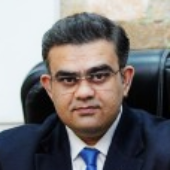Course Includes:
- Price: Rs. 10,000Rs. 6000
- Instrutor: Dr. Manish Bhanushali
- Duration: 9 Hrs
-
Lessons: 4
- Language: English
- Certificate: Yes


A Master's course in dermal threads is designed to provide medical professionals with the advanced training necessary to perform thread lifting, a minimally invasive procedure aimed at lifting and tightening sagging skin. Often referred to as a “non-surgical facelift,” dermal threads have become increasingly popular for facial rejuvenation and contouring without the need for invasive surgery or extended recovery times. This course equips practitioners with the skills and knowledge to deliver effective, safe, and aesthetically pleasing results using absorbable threads, such as polydioxanone (PDO), polylactic acid (PLA), or polycaprolactone (PCL), which are inserted beneath the skin to stimulate collagen production and lift tissue.
Dermal threads are a rapidly growing trend in aesthetic medicine due to
their ability to deliver noticeable results with minimal downtime. Patients are
increasingly seeking non-surgical alternatives to traditional facelifts,
particularly as these procedures offer subtle, natural-looking outcomes without
the extended recovery period or risks associated with surgery. Thread lifts
provide a minimally invasive option for treating sagging skin, wrinkles, and
volume loss, particularly in the mid-face, jawline, and neck.
The threads, once inserted under the skin, provide an immediate lifting
effect. However, the long-term benefits come from the body's natural healing
response, as the threads stimulate collagen production over time, leading to
firmer and smoother skin even after the threads dissolve. The procedure can
also be used for contouring and enhancing facial features, such as the
eyebrows or cheekbones, offering a versatile tool for aesthetic practitioners.
With the growing demand for non-invasive facial rejuvenation, mastering
the technique of dermal thread insertion is an excellent opportunity for medical
professionals to expand their skill set and offer highly sought-after services to
patients looking for a more youthful appearance without surgery.
A Master's course in dermal threads typically combines theoretical education. It provides an in-depth understanding of facial anatomy, thread types, techniques, and patient assessment to ensure safe and effective outcomes.
